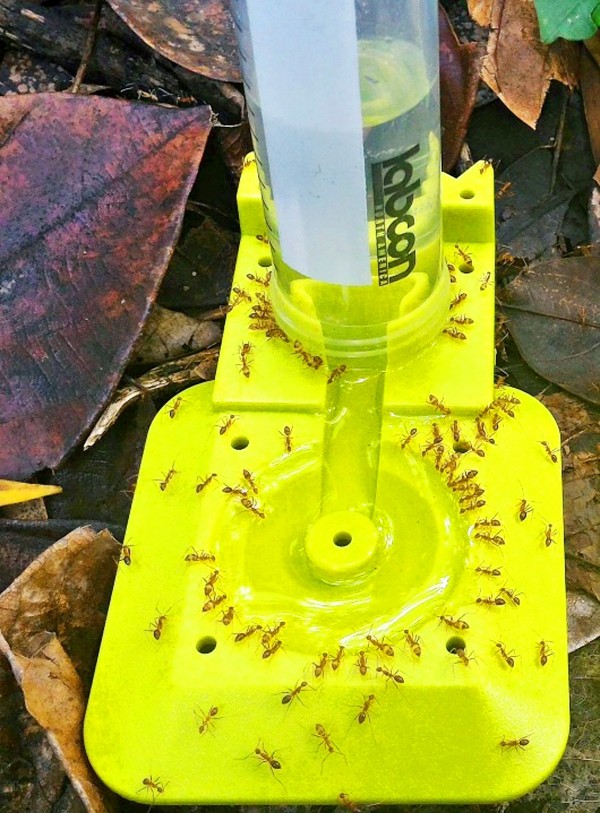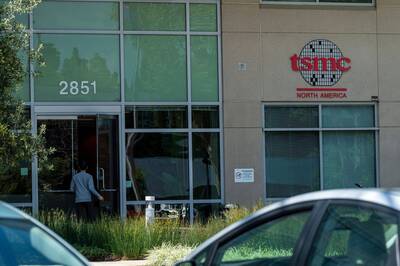《TAIPEI TIMES》 Park aims to end yellow crazy ants

Yellow crazy ants on Thursday crawl over a bait trap laid down by National Changhua University of Education professor Ling Chung-chi’s team of biologists in Pingtung County. Photo courtesy of Ling Chung-chi
ELIMINATION: The Kenting National Park’s conservation division has partnered with academics to target infestations by using special bait plates that are raised off the ground
By Tsai Tsung-hsien and Sherry Hsiao / Staff reporter, with staff writer
The Kenting National Park management office on Saturday said it has placed 240 specialized baiting stations in four areas around the park in hopes of eliminating supercolonies of yellow crazy ants.
The management office this year officially entrusted a team of biologists led by National Changhua University of Education biologist Ling Chung-chi (林宗岐) with the task of preventing and treating infestations of yellow crazy ants in Kenting.
According to a report by the office, a supercolony of yellow crazy ants is formed when worker ant colonies from different nests combine without the multiple queen ants attacking each other, which increases the density of the worker ants and improves their competitiveness.
The colonies quickly reach a high density, at which they have an effect on the ecological environment, the report said.
The park’s conservation division and Lin’s team have placed 60 specialized baiting stations each in Shadao (砂島), Banana Bay (香蕉灣), Manjhou Harbor (滿州港口) and along the coastline to eliminate supercolonies.
They plan to reassess the locations each odd-numbered month and research and monitor the situation each even-numbered month.
Stations with plates of bait placed on the ground would attract other organisms and ant species, but yellow crazy ants are more likely to search for food placed higher, office director Liu Pei-tung (劉培東) said.
This year, Lin’s team intentionally increased the number of stations with bait plates that were mounted up in trees, Liu said.
Native to west Africa, the yellow crazy ant entered Taiwan a century ago with imported plants.
Yellow crazy ants feed on crab carcasses. They release formic acid to blind the crabs and render them unable to search for food.
Yellow crazy ants have damaged the habitat of land crabs on Pingtung’s Hengchun Peninsula (恆春半島) and Taichung’s Gaomei Wetlands (高美溼地).
In 2013, the yellow crazy ant was ranked sixth in the 100 of the World’s Worst Invasive Alien Species report by the International Union for Conservation of Nature’s Invasive Species Specialist Group.
The conservation division has received reports of yellow crazy ant colonies in the region since 2015.
Academics last year discovered that the population of land crabs in Kenting National Park was noticeably decreasing.
The office plans to host volunteer training events in March and April to work with local residents to eliminate yellow crazy ants and protect the area’s crab population, Liu added.
新聞來源:TAIPEI TIMES



















